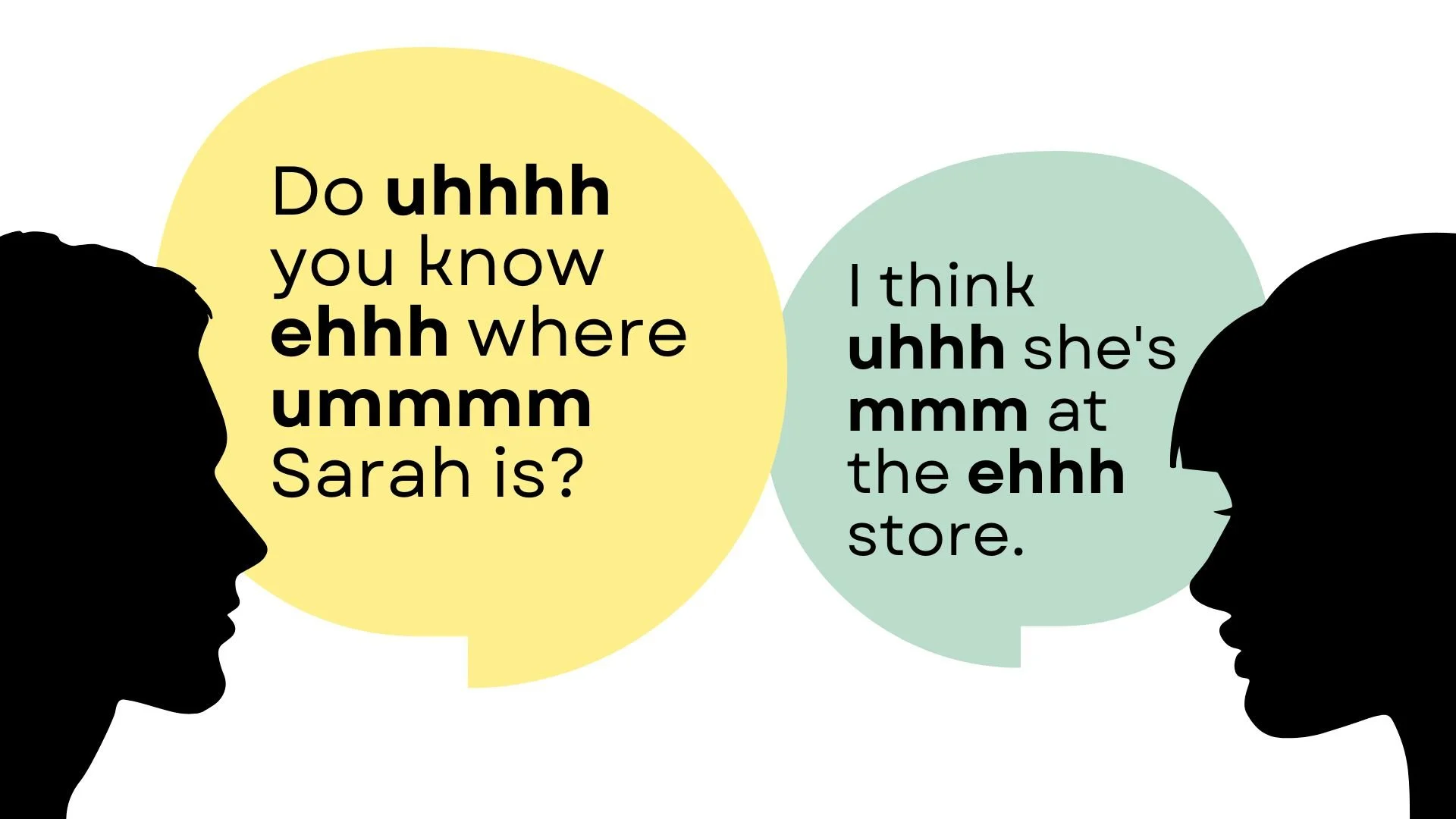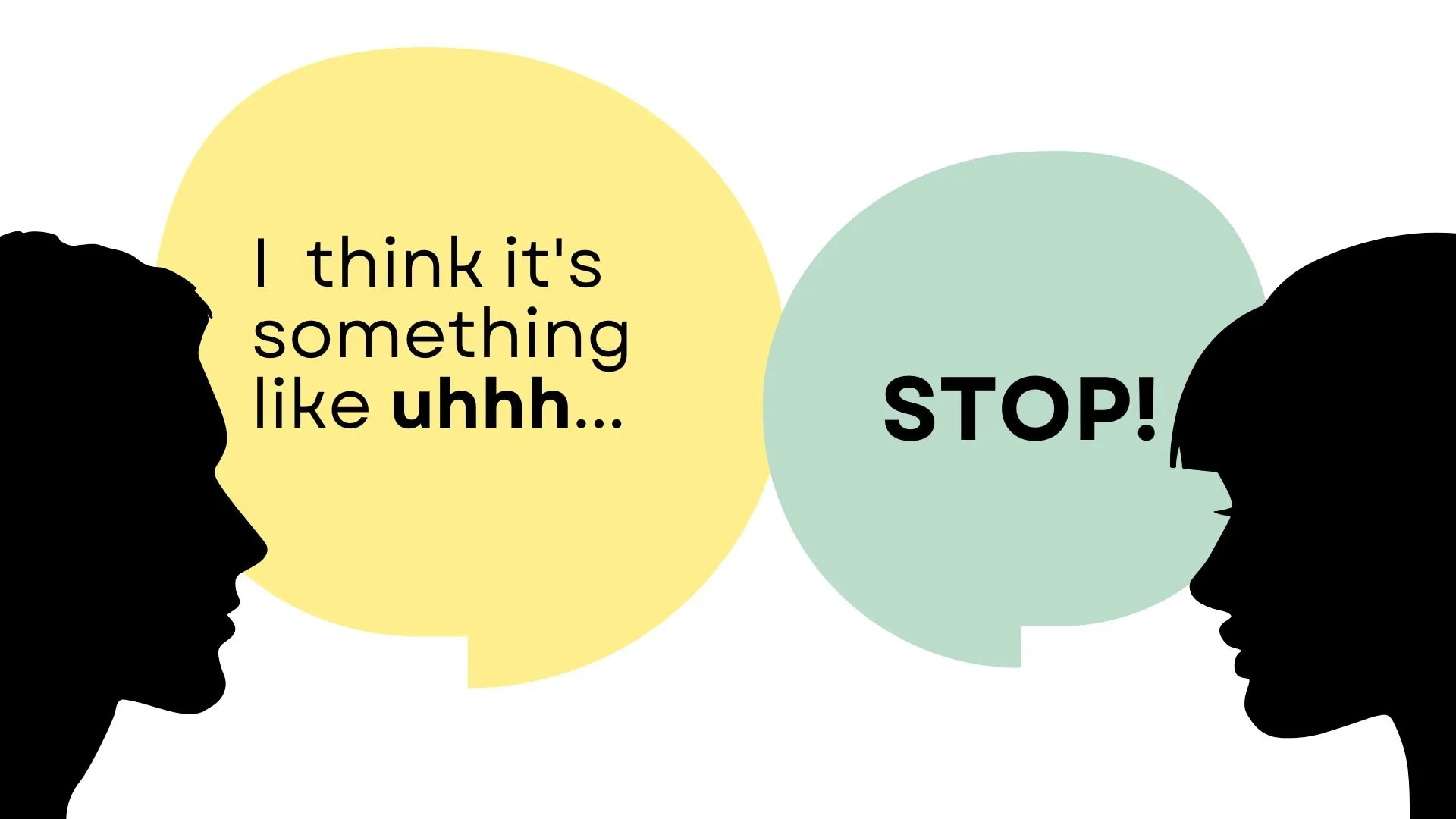Improve Your Speaking: Avoid Overusing Fillers
Today I was giving feedback to a student in our Accent Freedom Program, and I noticed he had the bad habit of overusing fillers in his speech.
This is a common problem, and not just for English learners. Even native speakers struggle with this bad habit!
So, this blogpost is going to explain the issue and give you some solutions.
Enjoy!!
Stefanie
What are fillers?
Fillers are phrases, words, or sounds that take up space in communication but add zero substance to the message.
Examples: you know, like, uh, eh, ee, mm, etc.
Using fillers can help your speech sound more natural and relaxed.
Example: “Uhhhh, let me think about that.”
However, using too many fillers is distracting for the listener. Furthermore, it can make you look less confident and less credible.
Example: “Ehhhhh I’m from ahhhh this little town in uhhhh Germany called uhhhh Schiltach.”
Do you see how difficult that sentence was to read? That’s also what it’s like to HEAR sentences with lots of fillers.
But don’t native speakers use fillers?
Yes! Native speakers do use fillers, but that doesn’t mean you should imitate everything you hear. For some people, using fillers is a really bad habit that interferes with their communication.
Example: “You know, I mean, it’s like she like, doesn’t know what she wants but, you know, like she acts like she does, you know?”
This sentence would be much more clear without the fillers.
Example: “It’s like she doesn’t know what she wants, but she acts like she does, you know?”
This is why good communicators use fillers sparingly and strategically. Overusing fillers is distracting and unnecessary, but carefully placed fillers can actually strengthen your communication and be very helpful when you want to…
Organize your thoughts before you speak
Lessen the intensity of a comment
Engage your listener
Sound more casual and/or relatable
Here is a great article with more information on how to use fillers strategically.
That said, native speakers and English learners don’t always use fillers in the same way.
Native speakers tend to overuse words and phrases like you know, like, and I mean. English learners, however, tend to overuse sounds like ehhhh, uhhh, ahhhh, eeee, and mmmm, and they use these sounds in between words as they THINK of…
what they will say next
how to structure the sentence correctly
how to pronounce a word correctly
This sounds something like:
“Ehhhh so I was uh thinking that mm maybe we could uh practice our English uh later.”
These fillers add extra sounds and syllables to your communication that change the rhythm of the language. This new rhythm is unfamiliar to English speakers, so it forces your listener to focus extra hard on whatever you say. Listening, then, becomes a difficult chore rather than something that is effortless and easy.
So, if your goal is to sound like a native speaker, remember that many native speakers have bad communication habits you should avoid. You don’t have to imitate everything you hear. Choose your mentors wisely and focus on building good, clear communication habits.
How to avoid overusing fillers
Do you tend to overuse fillers? Maybe you do or maybe you don’t. However, you will likely never REALIZE if you do unless you analyze the way you speak. That’s why the first solution is to build awareness. You need to see if overusing fillers is even a problem you need to fix!
Once you determine that you do struggle with this bad habit, the next step is breaking the habit through strategic interventions. Below you will find step-by-step instructions on how to do ALL of this.
Solution #1: Build awareness
Record a video of yourself (or use a video you already have) where you are speaking spontaneously without a script. Then, watch the recording and COUNT how many times you use fillers.
Are you using them in EVERY sentence?
Are they distracting?
Do they make you sound less confident and less credible?
You can analyze this yourself and also get feedback from a teacher or a friend. The goal is to use fillers sparingly and strategically.
Solution #2: Use pattern interrupt
All of our habits, good or bad, are done on “autopilot”, and this is why bad habits are so hard to break. Pattern interrupt uses external stimulation to make you hyper-aware of unwanted behavioral patterns so you can change them.
If you use too many fillers when you speak, here’s a great way to interrupt the habit and trigger a NEW behavior:
Schedule a speaking practice session with a friend and ask them to shout every time you use a filler. They can say something like “FILLER” or “STOP” to cut you off and grab your attention. You will be shocked by how often your friend interrupts you, and you will become super careful with your words to avoid getting interrupted.
Solution #3: Slow down
Students might find themselves overusing fillers when they…
feel nervous
are trying to speak too fast
can’t remember a word
are simply being careless
A great strategy to remedy this is simply slowing down. Really THINK about what you want to say and be specific. Make sure every word you say is intentional.
Solution #4: Use thought groups and pause
Don’t feel like you have to speak continuously without stopping, because that’s not natural, realistic, or pleasant for your listener. Instead, say short phrases altogether and pause in between each one.
Example: “However… I don’t agree… because… on one hand… it’s cheaper… but on the other hand… the quality is worse.”
Want to learn more English with me?
If you enjoyed this blogpost, you will LOVE these free resources! You can also follow me on my YouTube Channel, Instagram, and Tiktok for more English tips and lessons (links below). Finally, if you are REALLY serious about improving your English, I hope to see you soon in one of my courses.
Until then!
See you around :)



